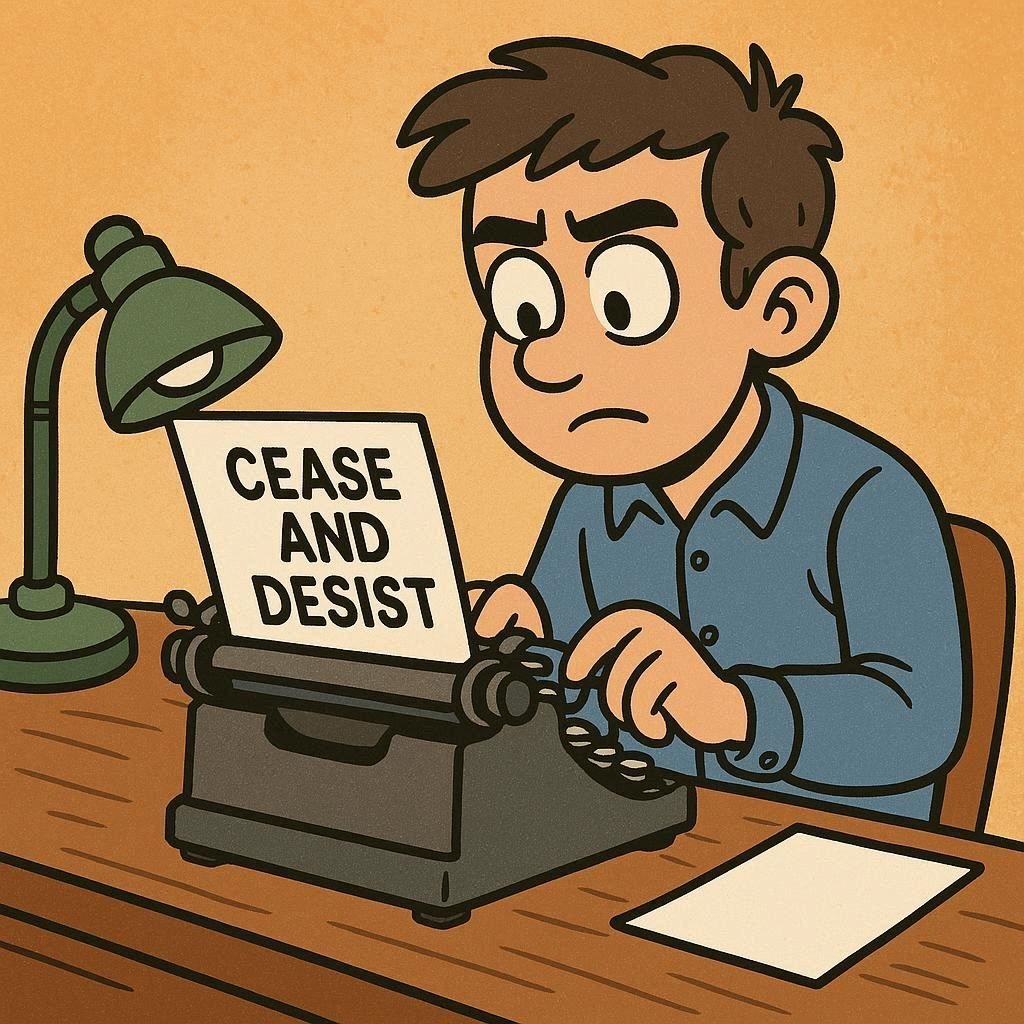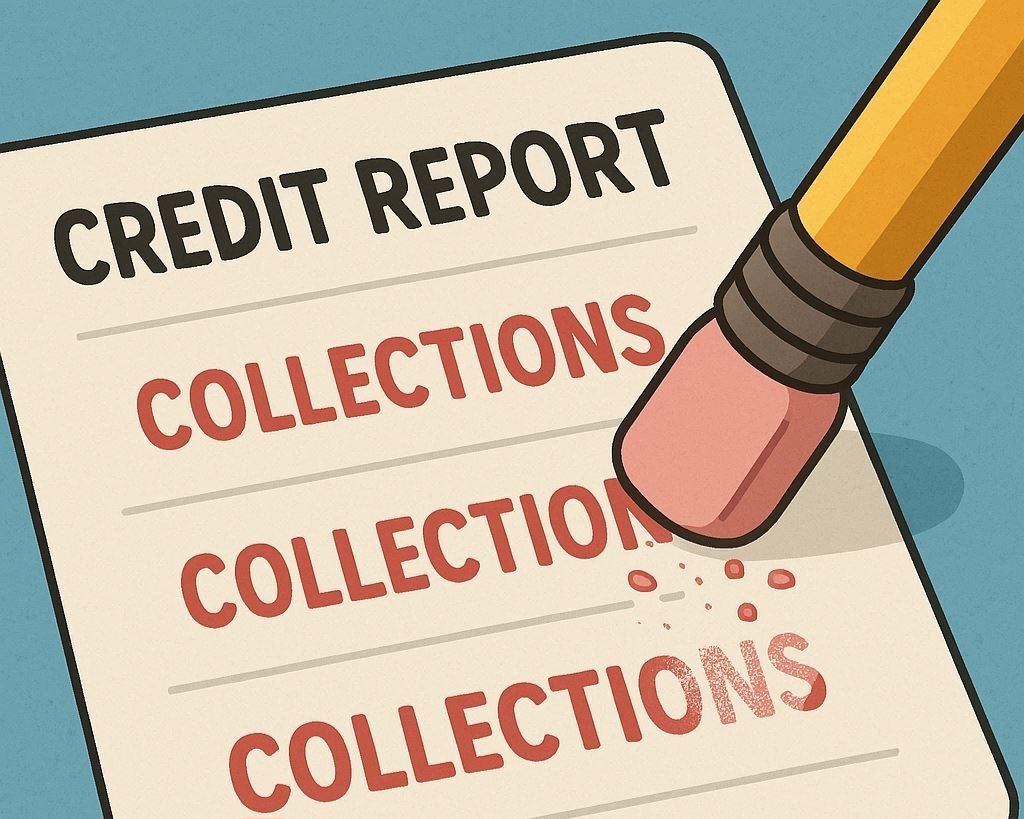When debt collection calls won’t stop or a company keeps reporting something wrong on your credit, a cease and desist letter can be your pause button. It’s a formal letter telling a person or company to stop a specific behavior—like repeated phone calls, contacting your workplace, or reporting disputed information—and warning that you’ll take further steps if it continues. It isn’t a lawsuit or a court order, but it’s a clear, documented boundary that often makes collectors or companies take notice.
Why People Use Them
- Relentless calls: You can demand collectors stop contacting you by phone or text. They can still mail notices or pursue legal options, but the constant ringing must end.
- Bad credit data: If a lender or collection agency keeps reporting inaccurate information, a letter can instruct them to stop while you formally dispute the error.
- Harassment or threats: Abusive language, scare tactics, or contacting your employer can be addressed with a firm cease and desist demand.
- Wrong person/wrong amount: If they’ve confused you with someone else or the balance is clearly wrong, you can require them to stop contact until they verify the debt.
What It Does (and Doesn’t) Do
Does: Put your demand in writing, create a paper trail, and show you attempted to resolve the matter before escalating. For credit issues, it documents your request to halt phone calls, texts, workplace contacts, or continued reporting of disputed information.
Doesn’t: Automatically erase a valid debt or block a legitimate lawsuit. If the debt is real, a collector can still mail you notices or sue in court. The letter only stops the unwanted contact or activity you identified.
When to Send One
- Collection calls continue after you asked for mail-only communication.
- You’re receiving collection notices for someone else entirely.
- A disputed item keeps reappearing on your credit reports even after you’ve submitted proof.
- Collectors are using hostile language, fake legal threats, or contacting your workplace and family.
What to Include
- Your information: Full name, address, phone, and account/reference number if available.
- Their information: Company or collector name, mailing address, and account number they use.
- Behavior to stop: Calls, texts, workplace contacts, or reporting inaccurate information.
- Reason: Wrong person, harassment, disputed balance, or ongoing inaccuracy.
- Your request: For example, “Communicate with me only by mail” or “Stop reporting this item while it is under dispute.”
- Deadline and next steps: A reasonable timeframe such as 10–15 business days. State that you’ll consider filing complaints or seeking legal help if the behavior continues.
- Delivery method: Certified mail with return receipt, so you have proof the letter was received.
Quick Template
From: Your Name
Address
City, State ZIP
Date
To: Company/Collector Name
Address
City, State ZIP
Re: Cease and Desist / Account No. XXXXX
Please cease and desist from the following actions regarding the above account:
• Calling or texting me.
• Contacting my workplace or third parties.
• Reporting or re-reporting inaccurate information while it is under dispute.
Reason: [Brief explanation—wrong person, disputed balance, harassment, etc.]
From now on, communicate with me only by postal mail at the address above.
If you contend I owe this debt, provide written validation and the name/address of the original creditor.
If these actions continue after you receive this letter, I will document each instance and consider filing complaints with regulators and seeking legal advice.
Sincerely,
Your Name
Best Practices
- Document everything: Save call logs, voicemails, letters, and screenshots in one folder.
- Request validation: If this is the first communication, you have the right to ask for a debt validation letter.
- Stay calm and factual: Clear, short, professional language works better than emotional rants.
- Track your results: Re-check your credit reports a few weeks after sending the letter to see if changes have been made.
- Don’t ignore real court papers: A cease and desist letter won’t stop a legitimate lawsuit. If you’re served, respond by the deadline.
After You Send the Letter
Once received, most collectors will stop calling and texting. They may still send letters or pursue collection through other legal channels, but the constant harassment should stop. If your issue involved false credit reporting, check your reports again after a short time to confirm corrections were made. If the behavior continues, you can file complaints with agencies like the Federal Trade Commission, your state attorney general’s office, or seek advice from a consumer-rights attorney.
Final Thoughts
You don’t have to put up with endless calls, harassment, or repeated mistakes on your credit file. A cease and desist letter is a powerful but simple tool to protect your peace and ensure there’s a written record of your request. While it won’t erase valid debts, it can stop harassment and give you the breathing room to dispute inaccuracies with a debt dispute letter or negotiate repayment in a calmer way. If the problem doesn’t stop, you’ll already have the documentation you need to take the next step with confidence.
To learn more about your rights when dealing with debt collectors, visit the Consumer Financial Protection Bureau’s Debt Collection Resources.





